This is the weekend edition of TheMarioBlog and will be updated as needed. The next blog post is Monday, May 28.
Audiences in my seminars and presentations laugh when I say: You must keep the finger happy!
Well, it is not a just a line (although I admit it is an ice breaker!), but a reality. No matter when I find myself in a waiting mode, I observe people and how they connect with their smartphones. It is a game of the eye, the brain and the thumb.
Just today, while waiting to board a flight to Zurich, there were several people within my visual reach. Not only were they adept at the use of their thumb, but, boy, did they move those thumbs fast to scroll or to swipe. Is this a familiar sight to you?
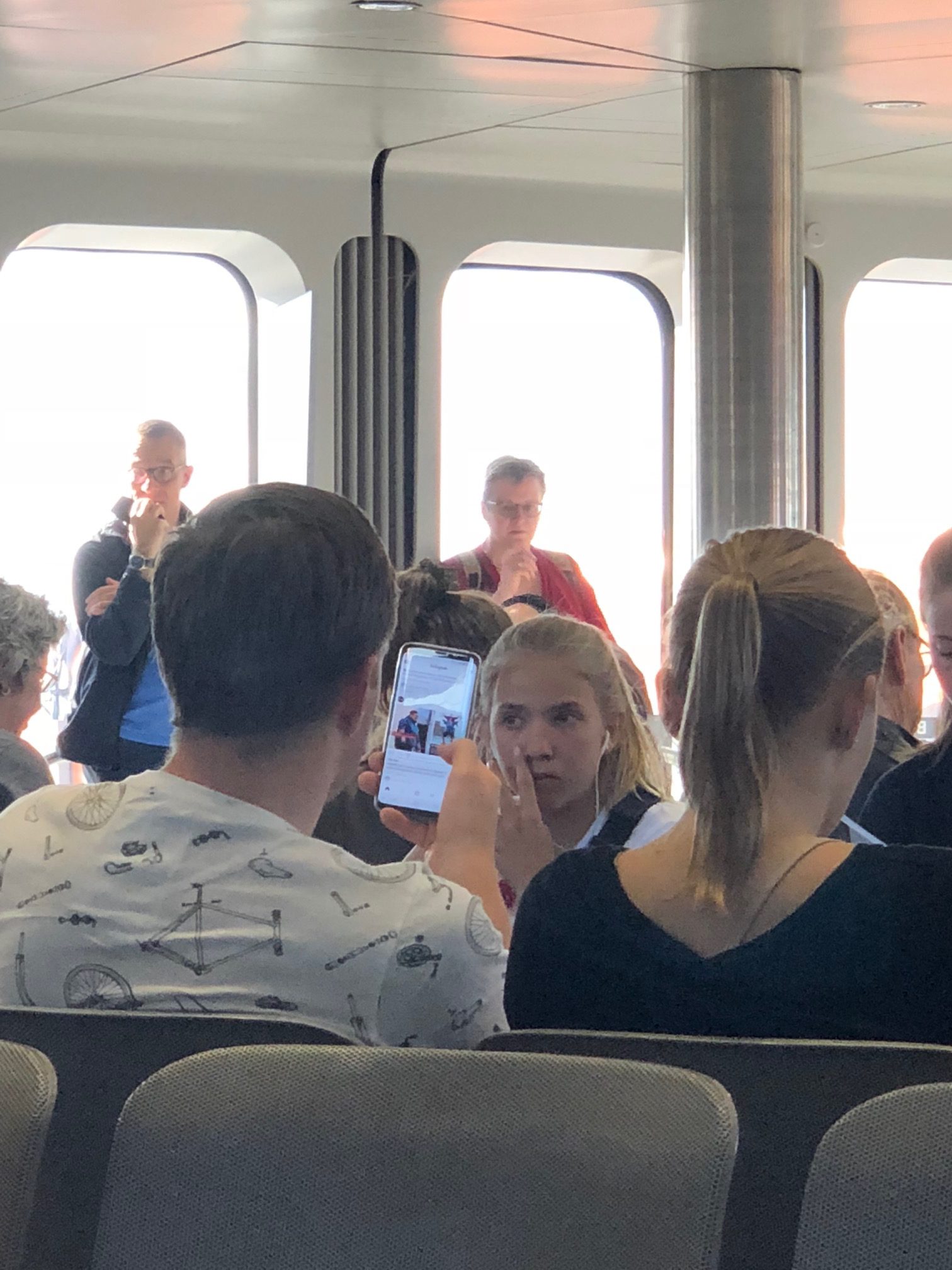
It takes, it seems, a particle of a second for a person to decide that what’s on the screen is not worthy of consideration and then the thumb moves to the next screen, with the expectation of something richer, better, funnier or more exciting.
I imagine EyeTrack researchers would have a tough time testing the movement of the thumb.
What we know
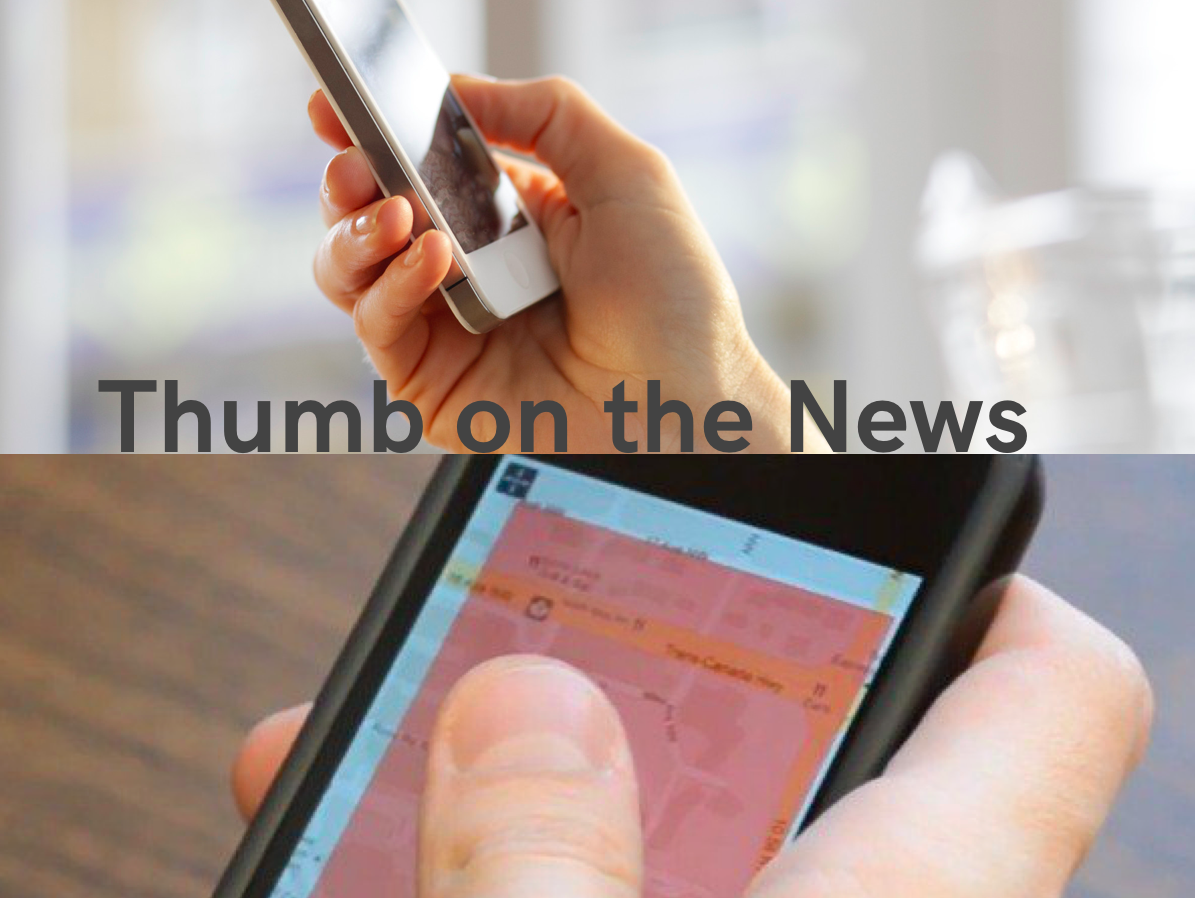
I urge anyone with more information about the way we use our fingers on a phone screen to reach out and share that information with me.
For now, this is what we know:
Perhaps one of the most complete and easy to understand studies on the subject of how we hold our smartphones is that of Steven Hoober. In his analysis of 1,333 observations of smartphones in use, Hoober found about 75% of people rely on their thumb and 49% rely on a one-handed grip to get things done on their phones.
In his own words:
“I’ve carried out a fresh study of the way people naturally hold and interact with their mobile devices. For two months, ending on January 8, 2013, I—and a few other researchers—made 1,333 observations of people using mobile devices on the street, in airports, at bus stops, in cafes, on trains and busses—wherever we might see them. Of these people, 780 were touching the screen to scroll or to type, tap, or use other gestures to enter data. The rest were just listening to, looking at, or talking on their mobile devices.”
I found this segment of the Hoober research quite interesting:
The users who we observed touching their phone’s screens or buttons held their phones in three basic ways:
- one handed—49%
- cradled—36%
- two handed—15%
One-handed use—with the
- right thumb on the screen—67%
- left thumb on the screen—33%
We tend to hold the phone in one hand, and the thumb becomes the wheel that drives our major activity, on the right hand side of the screen, either for swiping and/or scrolling.
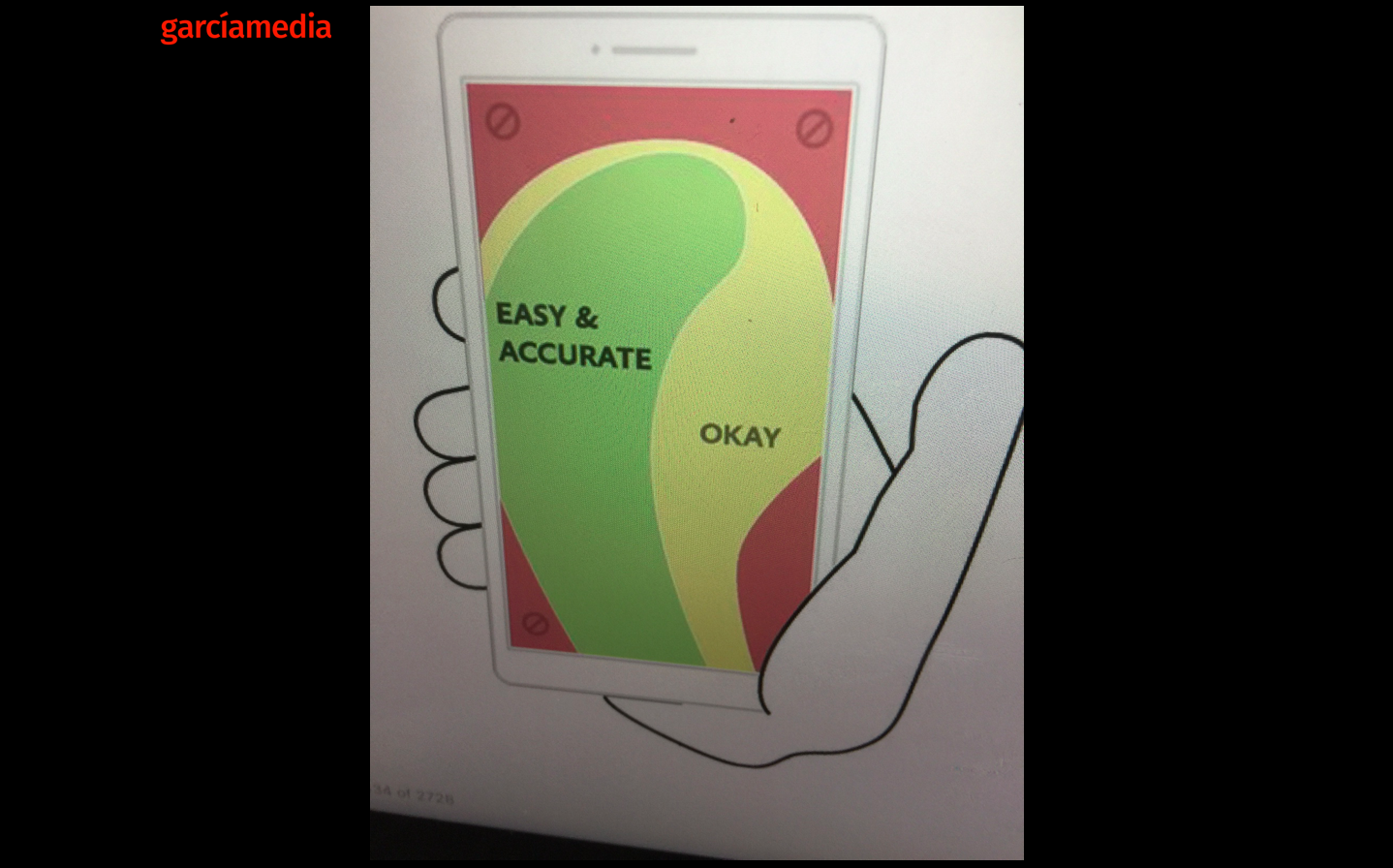
However, we use the index finger when it comes to sliding screens or to tap and to click, of course.
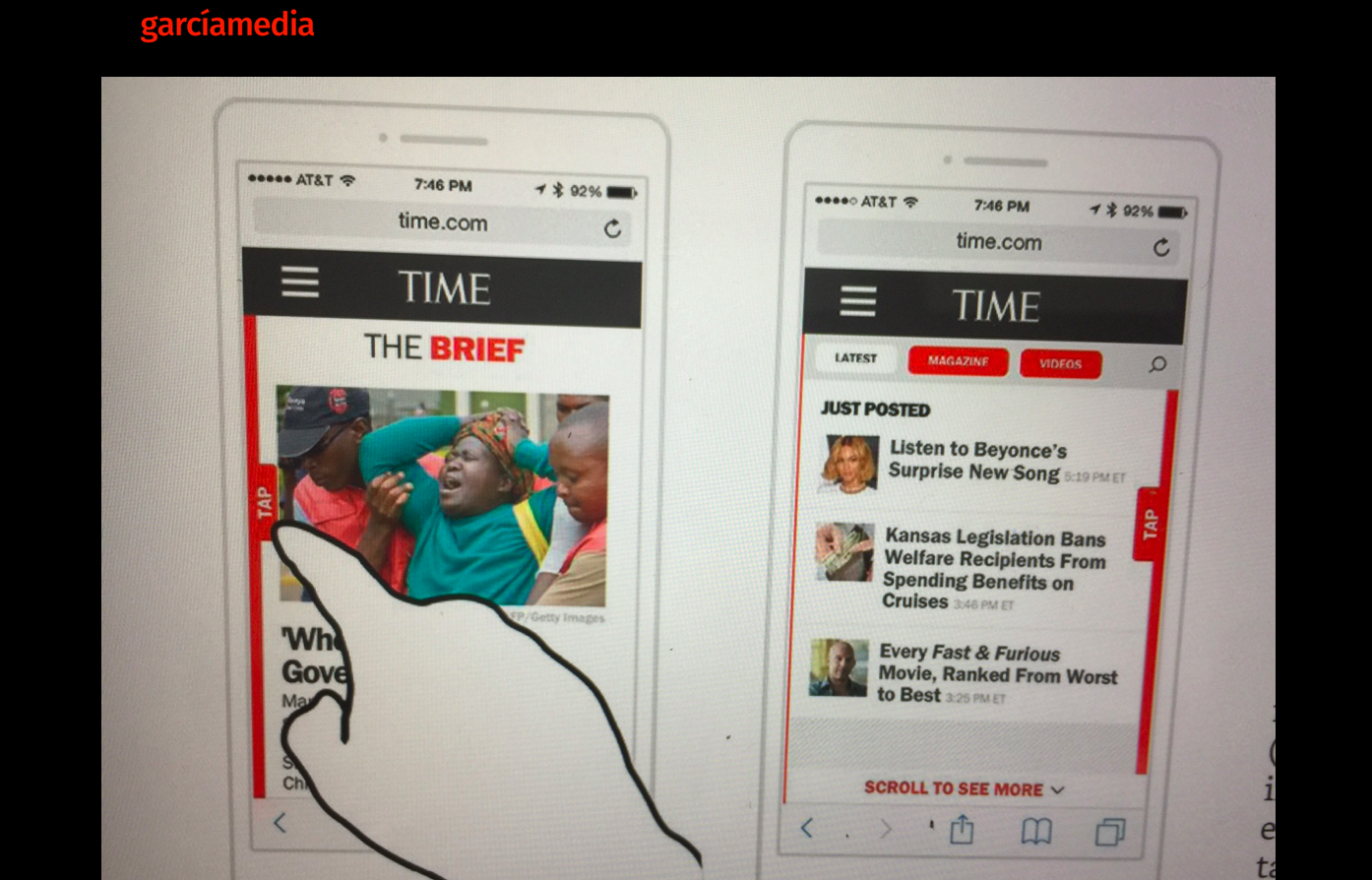
The Fortanet research
In putting together this blog post I have revisited the EyeTrack Research conducted by Dr. Christian Fortanet as part of his doctoral dissertation at the University of Alicante, Spain. I am honored to have been a part of the supervising faculty team for Christian’s research. His EyeTrack study shows us valuable findings about the way we read news on smartphones.
While his focus was on the eyes, and not necessarily the fingers, I have gone back to some of the images from his research to verify that, indeed, the right hand side of the screen is usually where the thumb rests, a reason that Christian suggested that images be placed on the left side of the screen, the point of orientation for the eye, and an area NOT covered by the thumb.
Take a look at these images from the Fortanet research:
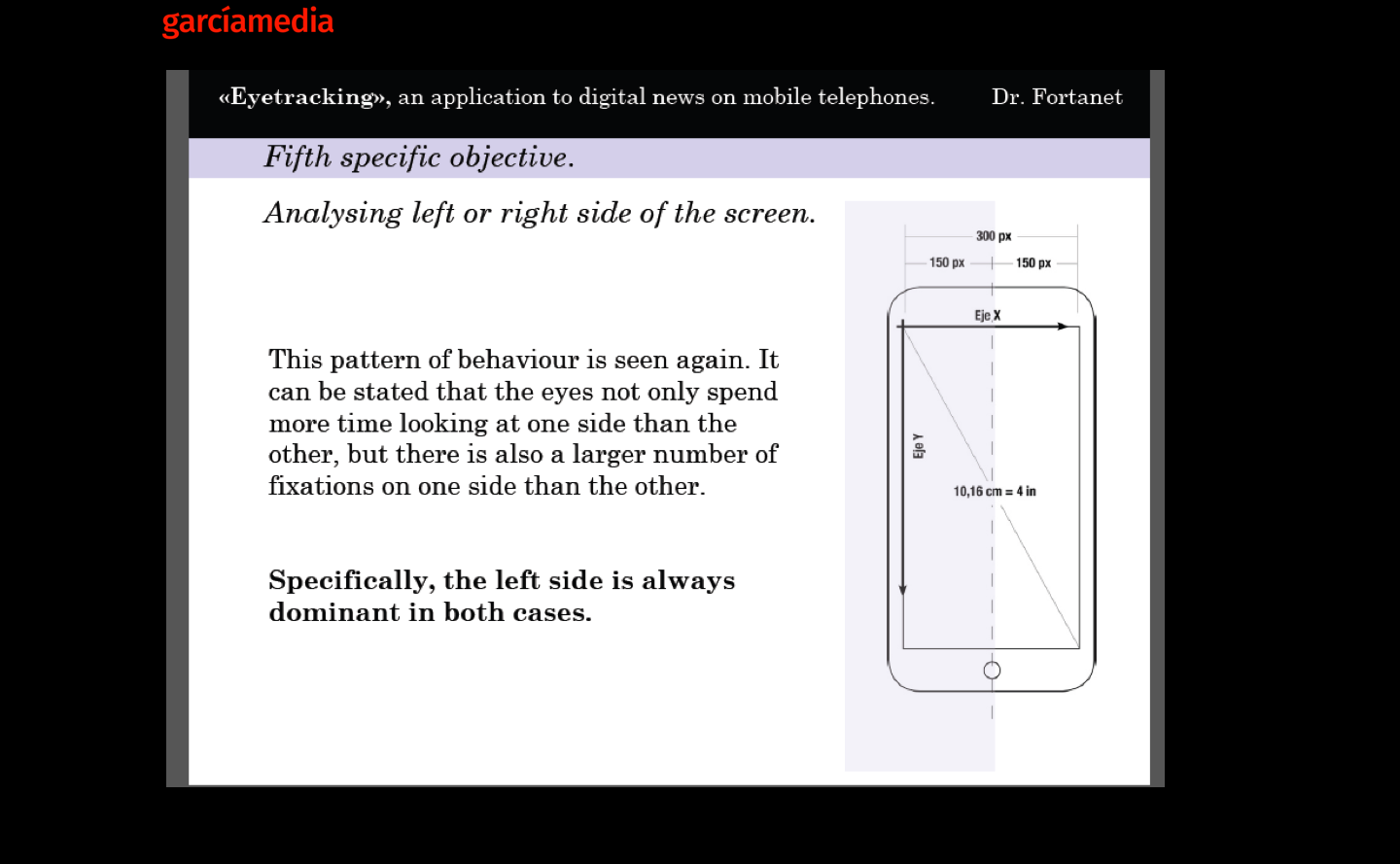
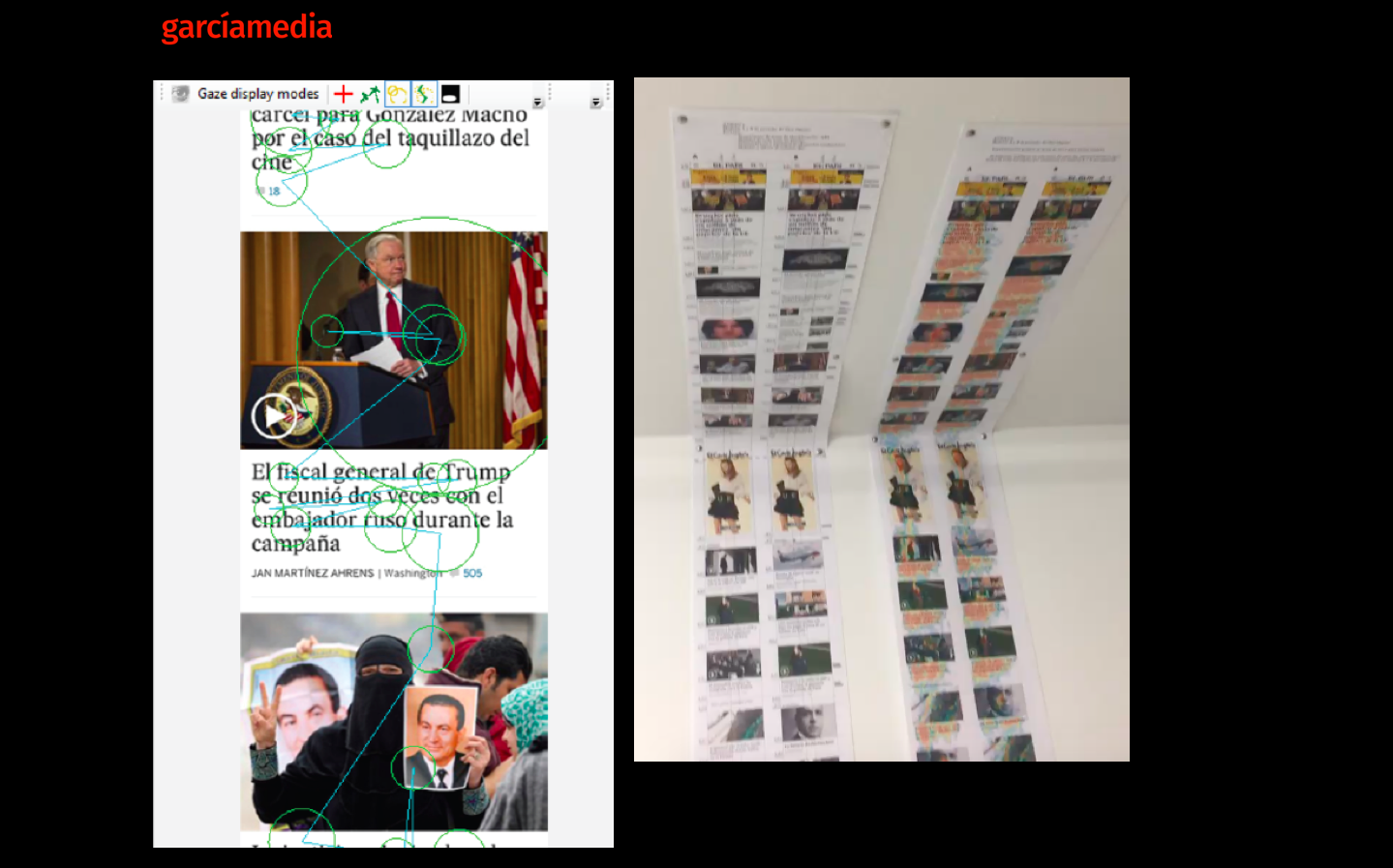
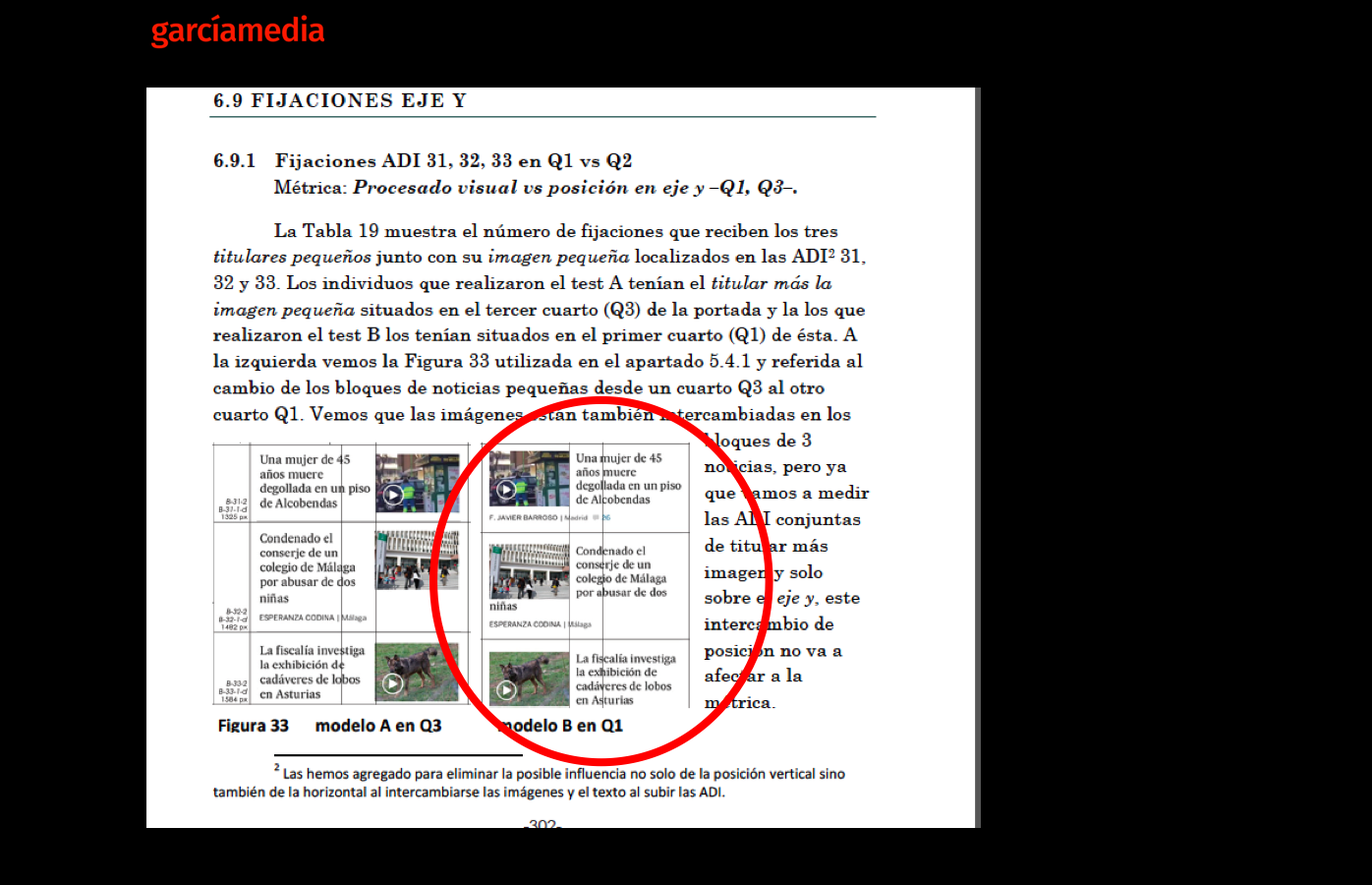
For my blog post on the Christian Fortanet EyeTrack Research for smartphones:
https://www.garciamedia.com/blog/latest-eyetrack-study-how-we-read-news-on-smartphones/
For more on how we use our fingers on smartphones:
https://www.uxmatters.com/mt/archives/2013/02/how-do-users-really-hold-mobile-devices.php
Doing print happily
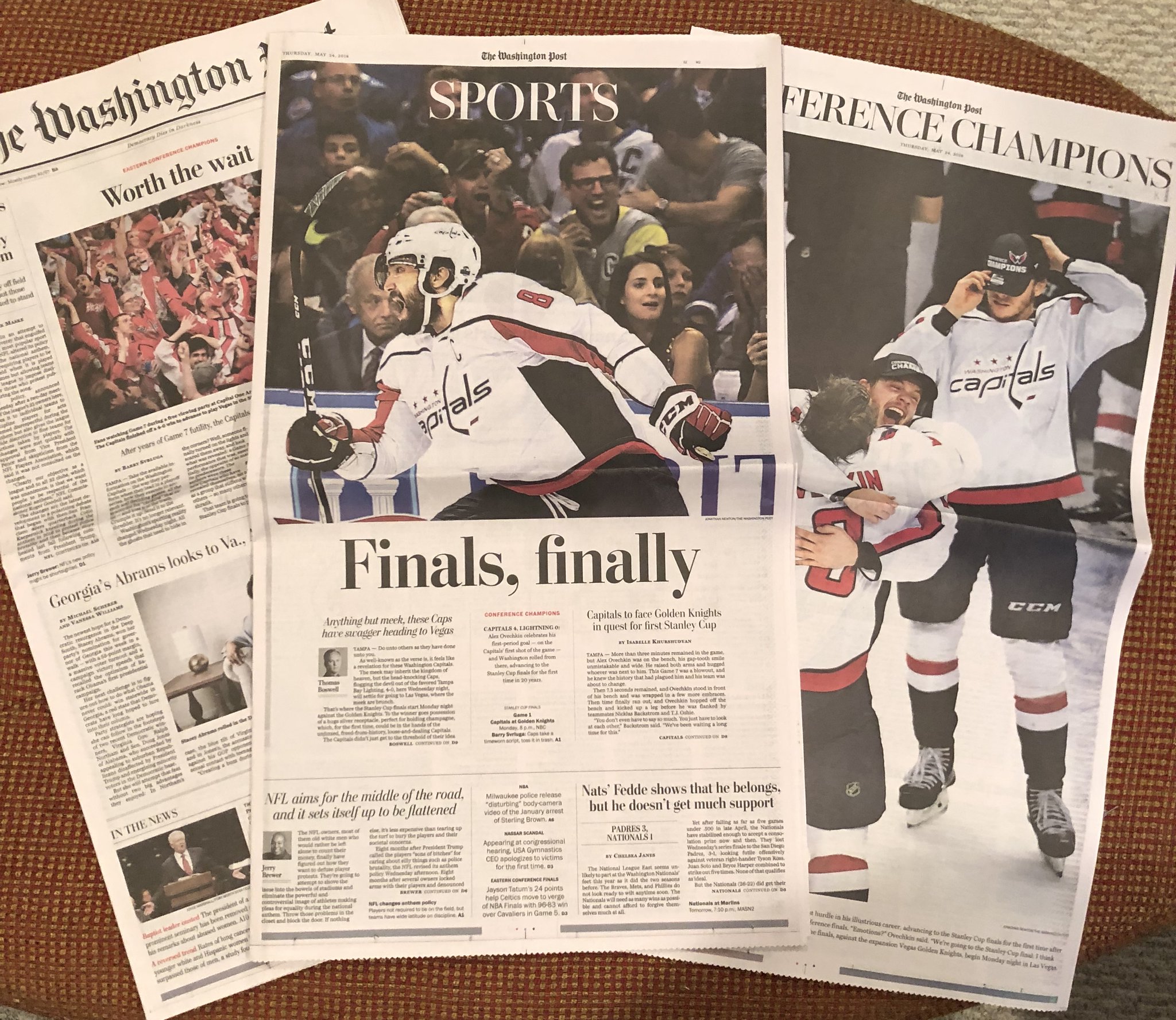
I like these pages from The Washington Post, celebrating that its local team, the Washington Capitals beat the Tampa Bay Lightning to advance to the Stanley Cup finals, where the team will play theVegas Golden Knights .
[Washington Capitals are heading to Stanley Cup finals, extinguish Tampa Bay Lightning in Game 7]
For more:
All the final Columbia student projects here:
Columbia final projects, Spring 2018
https://www.garciamedia.com/blog/my-columbia-stud…rojects-part-one/
https://www.garciamedia.com/blog/my-columbia-students-final-projects-part-2/
https://www.garciamedia.com/blog/my-columbia-students-final-projects-part-three/
https://www.garciamedia.com/blog/my-columbia-students-final-projects-part-four/
Mario’s Speaking Engagements

June 7-8—WAN-IFRA World Congress, Lisbon, Portugal
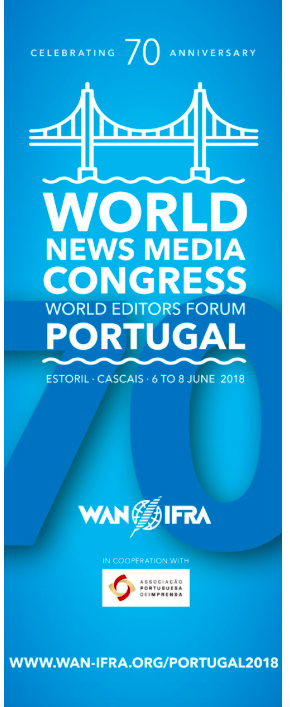
For more: http://events.wan-ifra.org/events/70th-world-news-media-congress-25th-world-editors-forum
June 12-14, CUE Days , Aarhus, Denmark
http://www.ccieurope.com/news/6738/Video_What_is_CUE_Days_2018
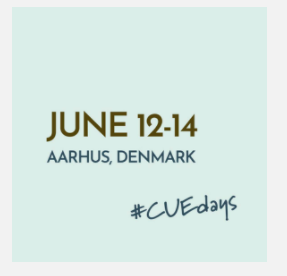
August 2, Digital House (Facebook workshop), Buenos Aires

October 6, 20, 27–King’s College, New York City
The Basics of Visual Journalism seminars
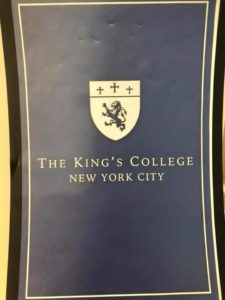
Garcia Media: Over 25 years at your service
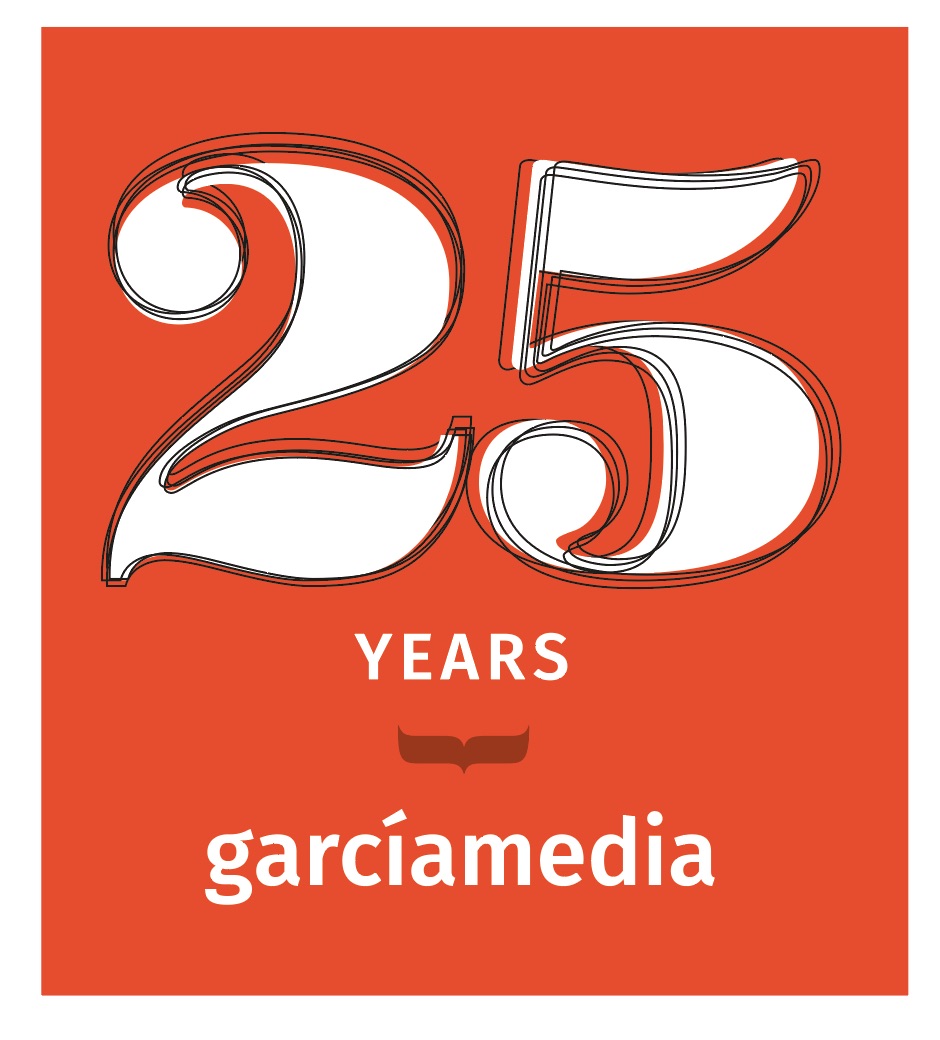
TheMarioBlog post #2846
